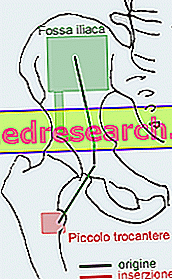Edited by Alessandro De Vettor
Among the various aspects that should be considered in the context of biotypological analysis in the planning of a training program there is also the degree of coefficient G of a man or a woman.

Both among males and females, there may be subjects with a high COEFFICIENT G. The former will show typically feminine and delicate features, while the latter will be conspicuously masculine with marked traits. Attention: we are not talking about sexual identity or preferences, nor virility or femininity, but only morphological aspects.
Although we tend to accept extremely virile or feminine models as the rule, these archetypes are far less common than we think.
Below (Table 1 and 2) the characteristics of two subjects are described, one male and the other female presenting a high COEFFICIENT G. Obviously they are extreme examples, however some of the aspects listed are not difficult to find commonly in the typical customer, both male and female. In fact, it is not uncommon to treat a man with a frail body, delicate features, fat in the pectoral area or women with broad shoulders and a lower muscular part.
| TABLE 1: CHARACTERISTICS ASSOCIATED WITH COEFFICIENT G HIGH IN MAN | |
Features | Feminine, sweeter, rounded, small |
Shoulders | Slightly rounded |
Eyelashes | They are an obvious feature to have long |
Arms | Relatively weak and much less developed than the legs |
Bones | Most of them are small |
Hips | wide |
Rib cage | Narrow |
Buttocks | Full and round |
Rectum of the abdomen | Full and rounded |
Life | High |
Thighs and calves | The outer curve of the thighs and the inner curve of the calves are prominent |
TABLE 2: CHARACTERISTICS ASSOCIATED WITH COEFFICIENT G HIGH IN WOMAN | |
Features | Masculine more marked, large and angular |
Shoulders | rectangular |
Otherwise | poor |
Arms | Sturdy, relatively long compared to the shoulders |
Bones | Big and well formed |
Hips | Close |
Rib cage | Wide |
Buttocks | muscled |
Rectum of the abdomen | Muscular especially the lower quadrant |
Life | Low |
Thighs and calves | Muscle |
Obviously we will not be able to set up a workout in the gym taking into account only the degree of coefficient G but it can give us further indications to determine some of its particular aspects.
How should a man or woman with a high G coefficient be treated in the gym? The answer is that the training must be "modulated" so as to re-balance the subject by "strengthening" the most deficient part. In humans, for example, it is possible to set up exercises particularly indicated for the production of testosterone, with consequent benefit under the lipid and muscular aspect. In women, the aim will be to properly harmonize the relationship between lean and fat mass, with aesthetic improvement not only physical, but also in features and "femininity".



